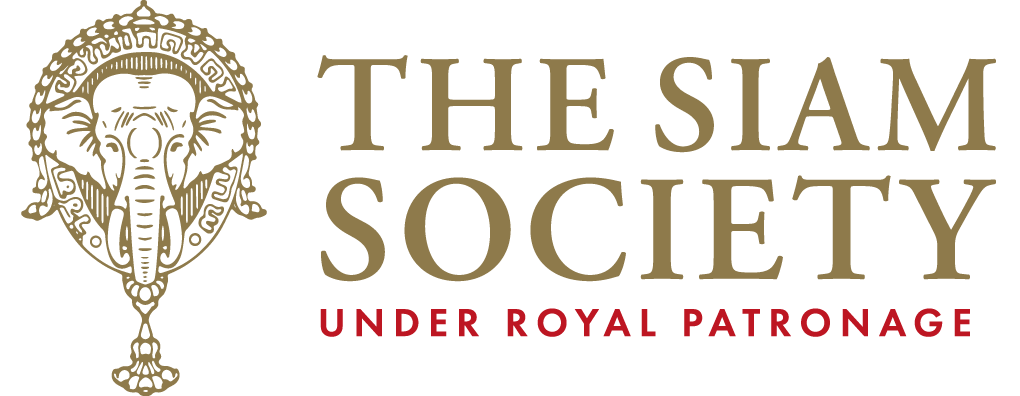The Old Bangkok II: Beauty, Delicacy and Legacies of the Past, A Visit to Four Heritage Buildings
Rattanakosin celebrated its centenary in 1882 during King Rama V’s reign. At the time, the city was quite developed and had adopted the western idea of being civilised, manifested through several European-styled houses and ministry buildings built during His Majesty’s reign. As Siam had to modernise in order to prevent Western powers from using the country’s lack of civilisation as justification for colonisation, modern infrastructure systems of telegraph, telephone, train and tram were constructed. From all throughout Europe, architects, engineers, sculptors, and artists travelled to Bangkok to contribute to its modernised landscape.
Following last year’s study trip to four European-styled heritage buildings in Bangkok from both King Rama V’s and King Rama VI’s reigns, The Siam Society, under the leadership of Dr Navamintr Vitayakul, former Council Member and Chairperson of the Lecture Committee of The Siam Society, will arrange a one-day trip to visit some of the spectacular architecture in Bangkok, including Vajiravudh College Assembly Hall, Phaya Thai Palace, Sai Suddha Nobhadol Building, and Phraya Burut Rattana Ratchaphanlop House.
When
Leader
Dr Navamintr Vitayakul
Former Council Member and Chairperson of the Lecture Committee of The Siam Society
Booking
The tentative programme will be as follows:
| Saturday, 13 May 2023 | |
| – | Meet at The Siam Society, 131 Asoke Montri Road, Sukhumvit 21, Bangkok. |
| 08:30
–
|
Depart The Siam Society to Vajiravudh College to visit the Thai-hybrid Style Auditorium Hall. Vajiravudh College, originally called “Mahadlek College” for royal pages, was founded by King Rama VI’s initiation. The school was opened in 1911, with a schoolhouse of wooden buildings and thatched roofs. Four years later, construction of a permanent building began which comprised the Auditorium Hall and buildings in Thai style to balance with Wat Benchamabophit on the opposite side of Dusit Zoo. Mr Edward Healey and Phra Samitlekha were chief architects. These five buildings were completed and officially opened on 23rd January 1917. They rank amongst the first group that applied Thai style to multi-storey buildings.
Visit Phaya Thai Palace, which was once known as King Rama V’s place for relaxing and sometimes served as the royal cottage for the King’s agricultural experiments. The Queen Mother and King Rama VI once spent their time at the Palace. It was later transformed into a five-star hotel and the Royal Thai Army’s medical headquarters, which marked the beginning of Phramongkutklao Hospital. Phaya Thai Palace now serves as a museum with many interesting buildings. |
| Noon: | Lunch at Kaew Jao Jom Hotel, savour traditional Thai cuisine. |
| Afternoon: | Visit Sai Suddha Nobhadol Building Museum and three heritage buildings in the compound: Adhorn Dinya Nivasa Building, Chudhavatanabhorn Building and Auan Achava Dhamdhawalaya Building. These three buildings are in Suan Sunandha Rajabhat University which was once a royal court within Dusit Palace, a place for the leisure of King Rama V and the royal family. During the reign of King Rama VI, 32 buildings were built as residences for the royal consorts and concubines of his father, King Rama V. After the Siamese Revolution in 1932, most of the royal members who lived here, left the palace. Until the reign of King Rama VIII, Suan Sunandha Palace was used as a lady school named Sunandha Wittayalai School and later became Suan Sunandha Rajabhat University. |
| –
17:00 |
Visit Phraya Burut Rattana Ratchaphanlop House (Nop Krairiksh House) who was a chamberlain during the reign of King Rama V. His Majesty royally bestowed him the land and money to build this house. He designed all the plans and decorated the house in Victorian-Gothic style, focusing on natural patterns of flowers and leaves, similar to Art Nouveau and used foreign craftsmen from the same group that built the Ananta Samakhom Throne Hall to build this house.
Return to The Siam Society |
|
The Siam Society reserves the right to change the programme as necessary. |
|
Important notes:
– The Siam Society may utilise photos taken from study trips, lectures, performances, and other activities as part of its public relations and marketing campaign. These photos, which may sometimes contain image(s) of activity participants, can also be featured on the Society’s website and other online social media channels.
Booking:
Contribution of THB 4,500 (THB 4,900 for non-members) will cover transportation, lunch, gratuities and other costs incurred to make this trip possible. In addition, basic accident insurance is included. There is a 3% surcharge for credit/debit card payment to cover bank charges. Please pay by cash or cheque payable to “The Siam Society”. Transfer can also be made to The Siam Society travel account at TMBThanachart Bank (ttb), saving account no. 053-2-18000-7 or by scanning the QR code on your right. Once payment has been made, please fax or e-mail the deposit or transfer docket to us.
We kindly ask that you confirm your reservation by Tuesday, 2 May 2023
More upcoming study trips
-

-
 Missionaries, Diplomats and Teak-Wallahs: The Built Heritage of Chiang Mai, 1867 - 1941การศึกษาสัญจรSaturday, 29 to Sunday, 30 November 2025
Missionaries, Diplomats and Teak-Wallahs: The Built Heritage of Chiang Mai, 1867 - 1941การศึกษาสัญจรSaturday, 29 to Sunday, 30 November 2025 -
 Echoes Across the Mekong: Rock Art of Pha Taem and Wonders of Southern LaosการศึกษาสัญจรThursday, 15 to Sunday, 18 January 2026
Echoes Across the Mekong: Rock Art of Pha Taem and Wonders of Southern LaosการศึกษาสัญจรThursday, 15 to Sunday, 18 January 2026 -

-
 The Painted Landscape and the Hidden Heritage: A Visit to The Three Corners of Isan’s CultureการศึกษาสัญจรFriday, 24 to Sunday, 26 October 2025
The Painted Landscape and the Hidden Heritage: A Visit to The Three Corners of Isan’s CultureการศึกษาสัญจรFriday, 24 to Sunday, 26 October 2025
